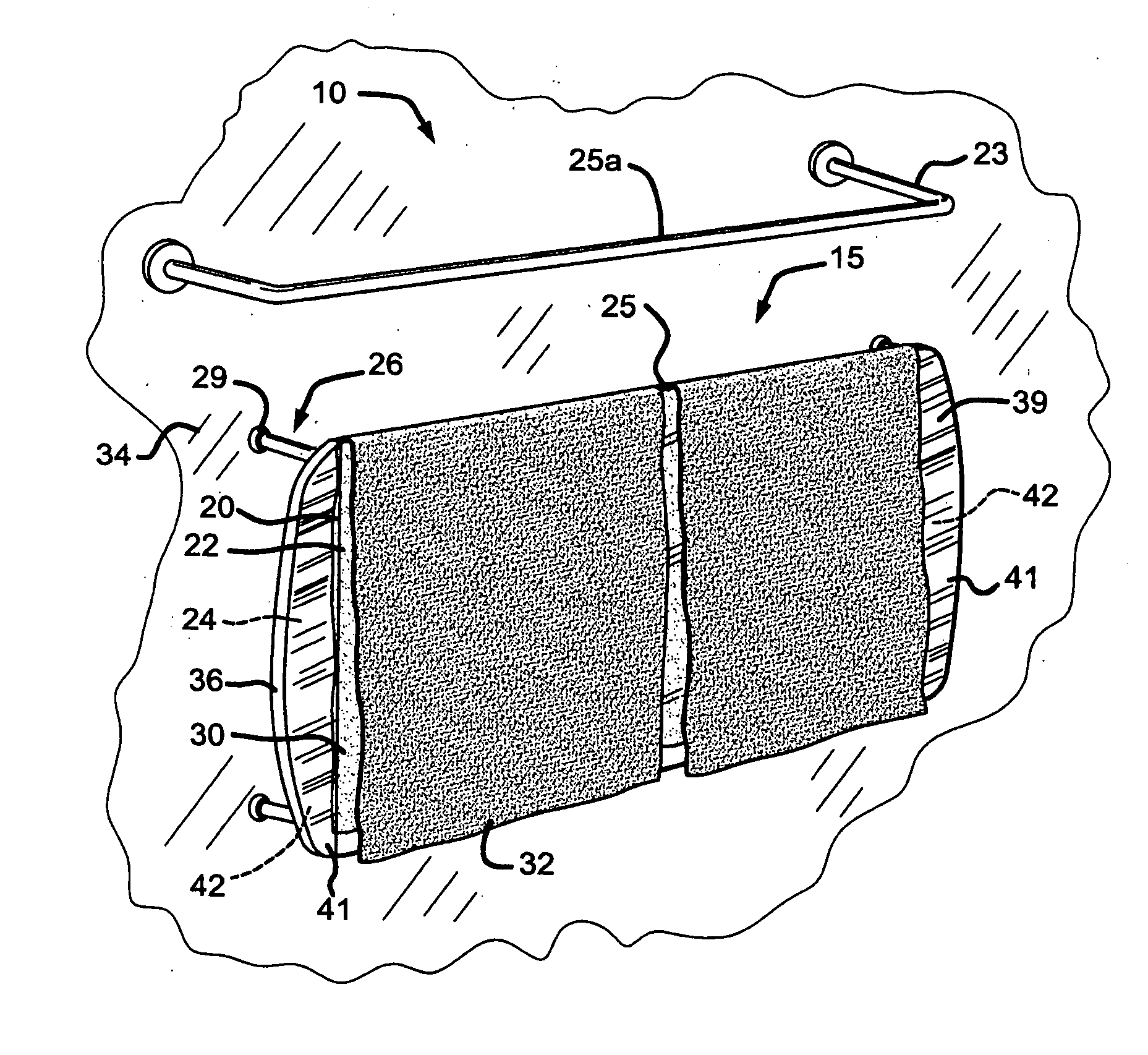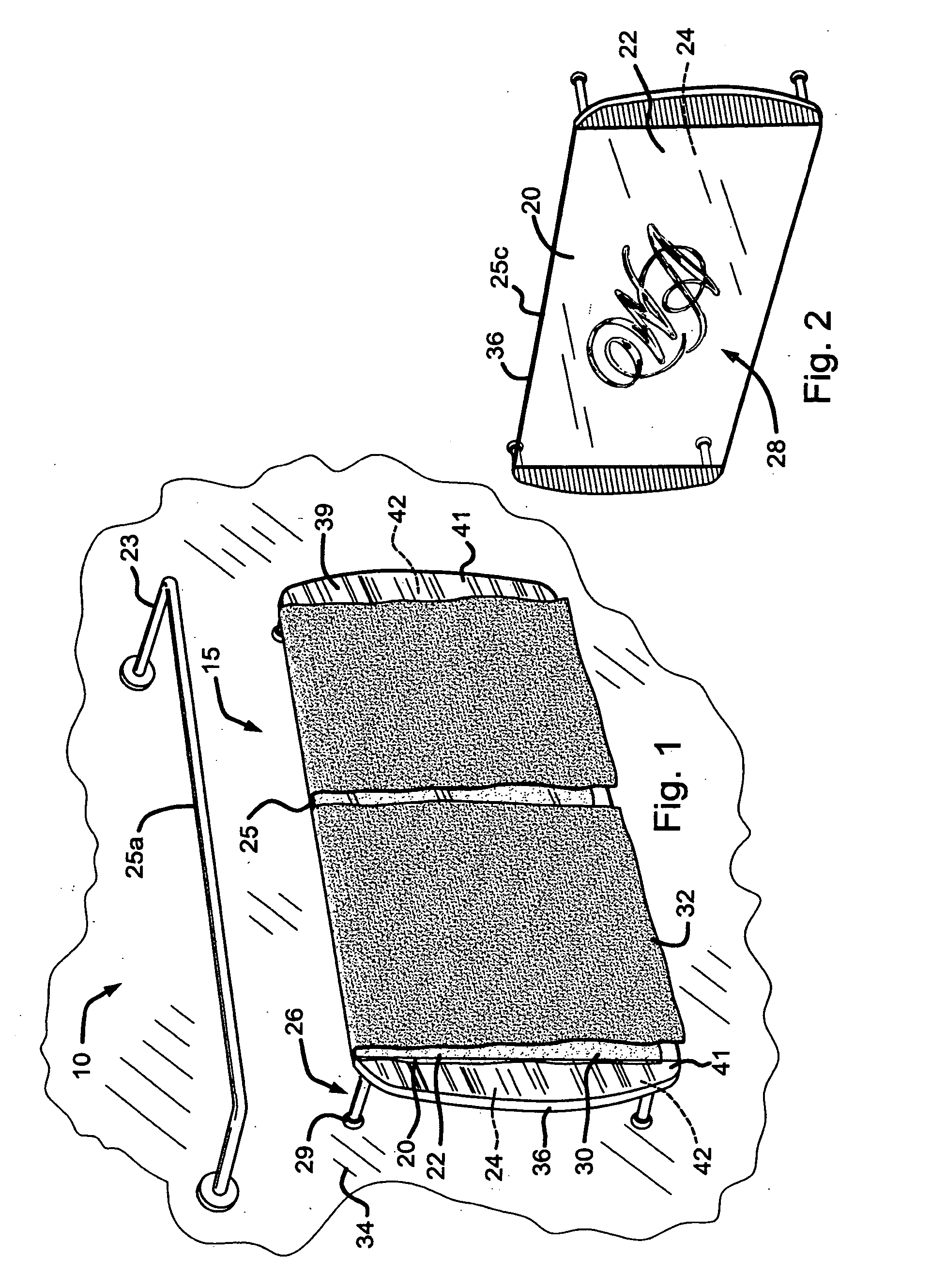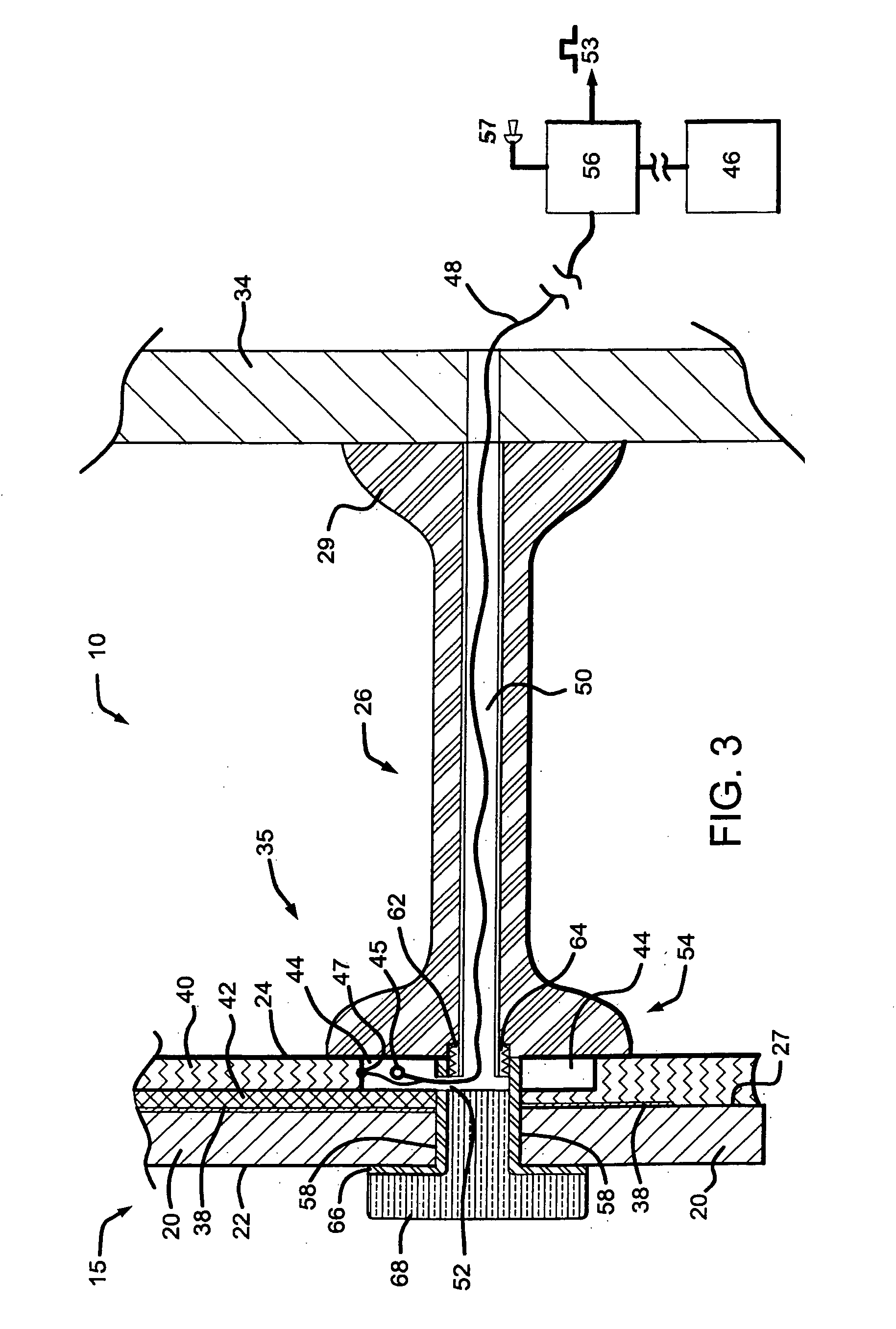Method and apparatus for a cloth heater
a heater and cloth technology, applied in the field of cloth heaters, can solve the problems of indirect and inefficient heating methods, complicated use, and the majority of the parts of towels that cannot be heated,
- Summary
- Abstract
- Description
- Claims
- Application Information
AI Technical Summary
Benefits of technology
Problems solved by technology
Method used
Image
Examples
Embodiment Construction
[0022] Referring to FIG. 1, a three dimensional front view of a preferred embodiment of a cloth heater 10 of the present invention is shown as having at least one heated panel 15 that has at least a first sheet of dielectric material 20. The panel 15 is depicted as substantially rectangular with rounded-edges, however, any geometric shape having any number of sides, including oval, circular, and heart shaped designs, are well within the spirit and scope of the present invention.
[0023] The first sheet 20 has a first major surface 22, and the panel 15 has an opposing second major surface 24. The first major surface 22 and the second major surface 24 are depicted as substantially planar, however, the cloth heater 10 can also have non-planar surfaces 22, 24. In this preferred embodiment, four support members 26 are utilized to mount the heated panel 15 to a wall 34.
[0024] As shown in FIG. 1, the support members 26 are straight and horizontally disposed. However, as FIGS. 1, 5, 10, and...
PUM
 Login to View More
Login to View More Abstract
Description
Claims
Application Information
 Login to View More
Login to View More - R&D
- Intellectual Property
- Life Sciences
- Materials
- Tech Scout
- Unparalleled Data Quality
- Higher Quality Content
- 60% Fewer Hallucinations
Browse by: Latest US Patents, China's latest patents, Technical Efficacy Thesaurus, Application Domain, Technology Topic, Popular Technical Reports.
© 2025 PatSnap. All rights reserved.Legal|Privacy policy|Modern Slavery Act Transparency Statement|Sitemap|About US| Contact US: help@patsnap.com



